Victorian brick facade restoration
Victorian brick buildings in Toronto
Toronto’s Victorian brick buildings, dating from the 19th century, exemplify meticulous brickwork and elegant detailing characteristic of the era. Found in neighborhoods like Cabbagetown, these structures tell tales of the city’s history. With enduring charm, they stand as resilient symbols of Toronto’s architectural character, connecting the present to its rich historical roots. The Victorian bricklayers used red and buff (yellow) brick to clad the face of these buildings. They gave each building a unique design through details and patterns. Brick arches, detailed panels and various other features ensured a vast variety of unique Victorian facades all across the city. Even to this day I will be driving down a street and spot a detail or a feature on a Victorian facade that I have never seen before.
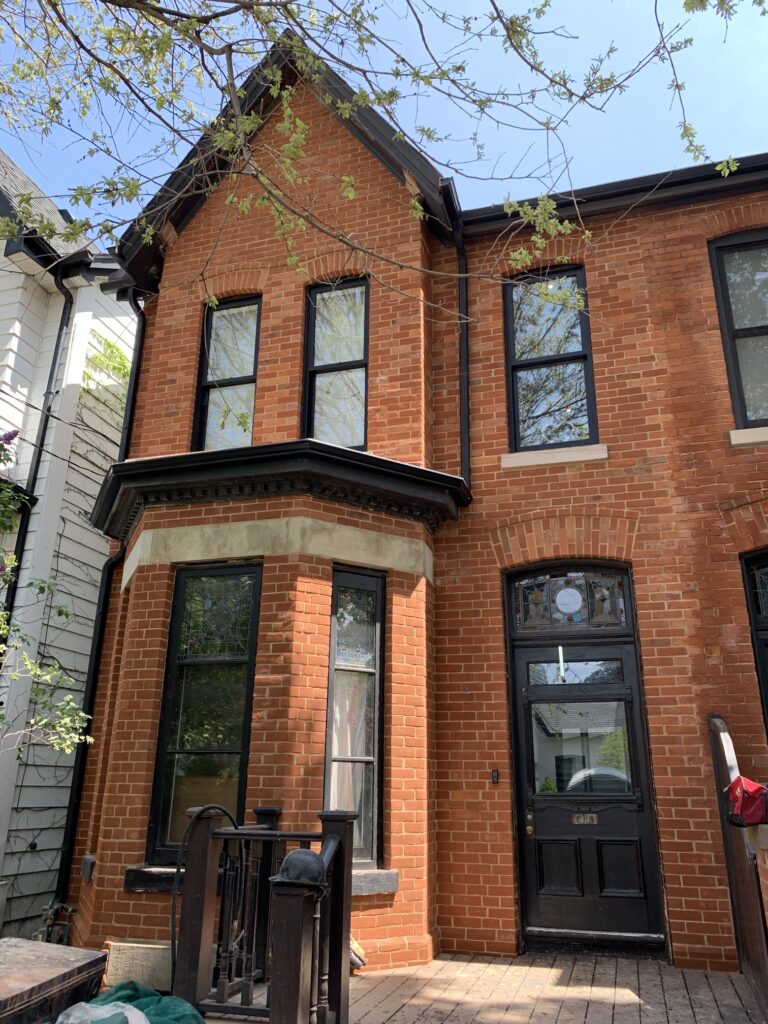
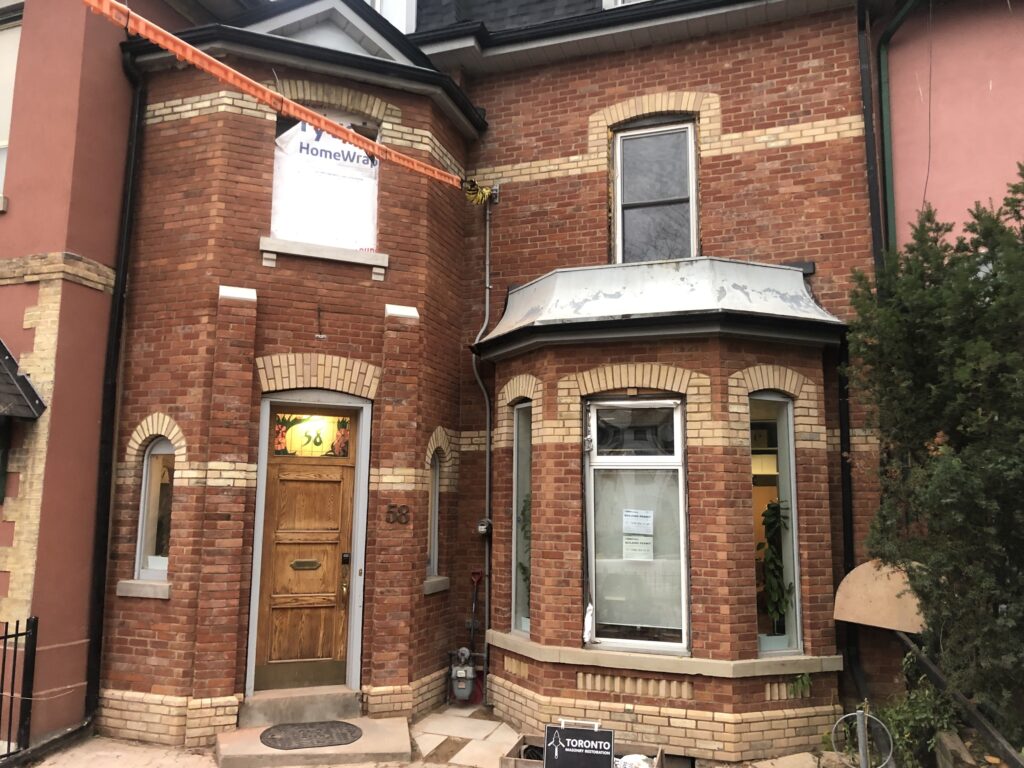
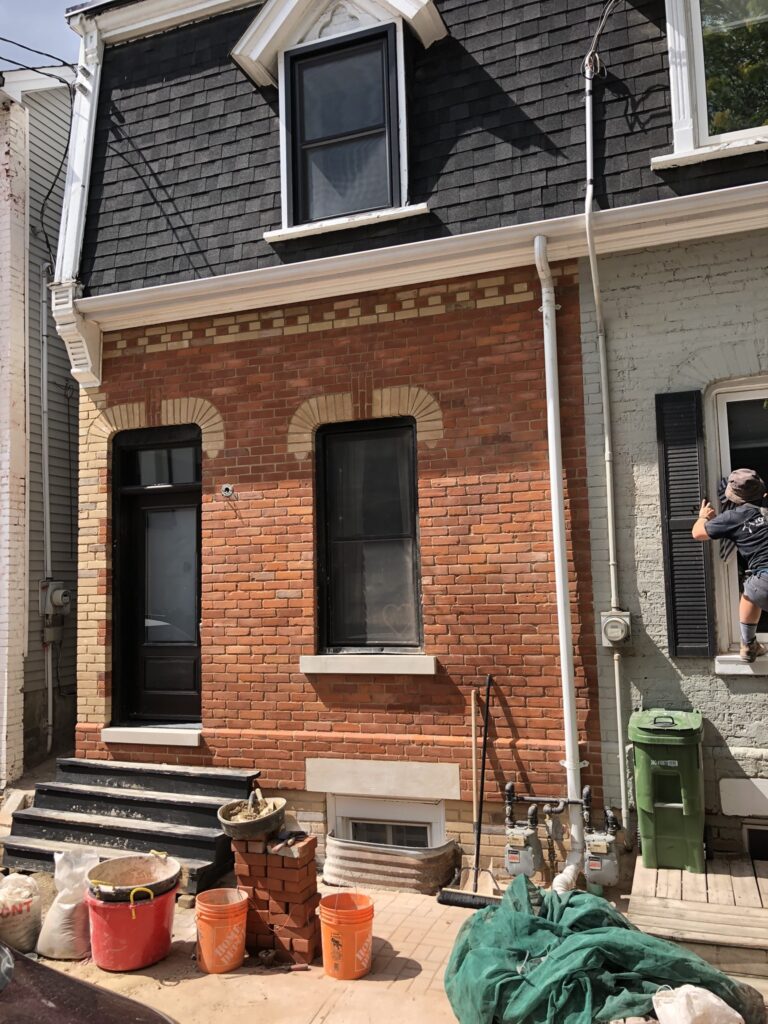
Lime mortar
The Victorian bricklayers used a lime mortar when building these facades. This mortar has been used for thousands of years. It’s simply created by mixing a combination of calcium hydroxide (lime binder), aggregate (sand) and water. Whether it by accident or by design this mortar is quite soft and permeable. This means moisture is attracted to it and thus pulled away from the brick. This helps prevent freeze thaw and salt damage attacking the brick. When you see a wall with perfect brick but the mortar joints are eroded that’s how you know the mortar is functioning properly. Some homeowners will see that and think a hard mortar needs to be used so it doesn’t deteriorate again. That is a mistake and one that can result in premature deterioration of the brick.
Deterioration of Victorian Brick Facades
Freeze-Thaw effects on Brick
In Toronto, the integrity of bricks is constantly under threat from moisture, a driver of both freeze-thaw cycles and salt damage. During the winter season, water infiltrates the porous composition of bricks. Subsequent freezing and expansion in response to temperature drops apply pressure to the pores in both brick and mortar, setting off a repetitive cycle of freezing and thawing. This process may lead to spalling in both mortar and brick, potentially causing gradual structural harm.
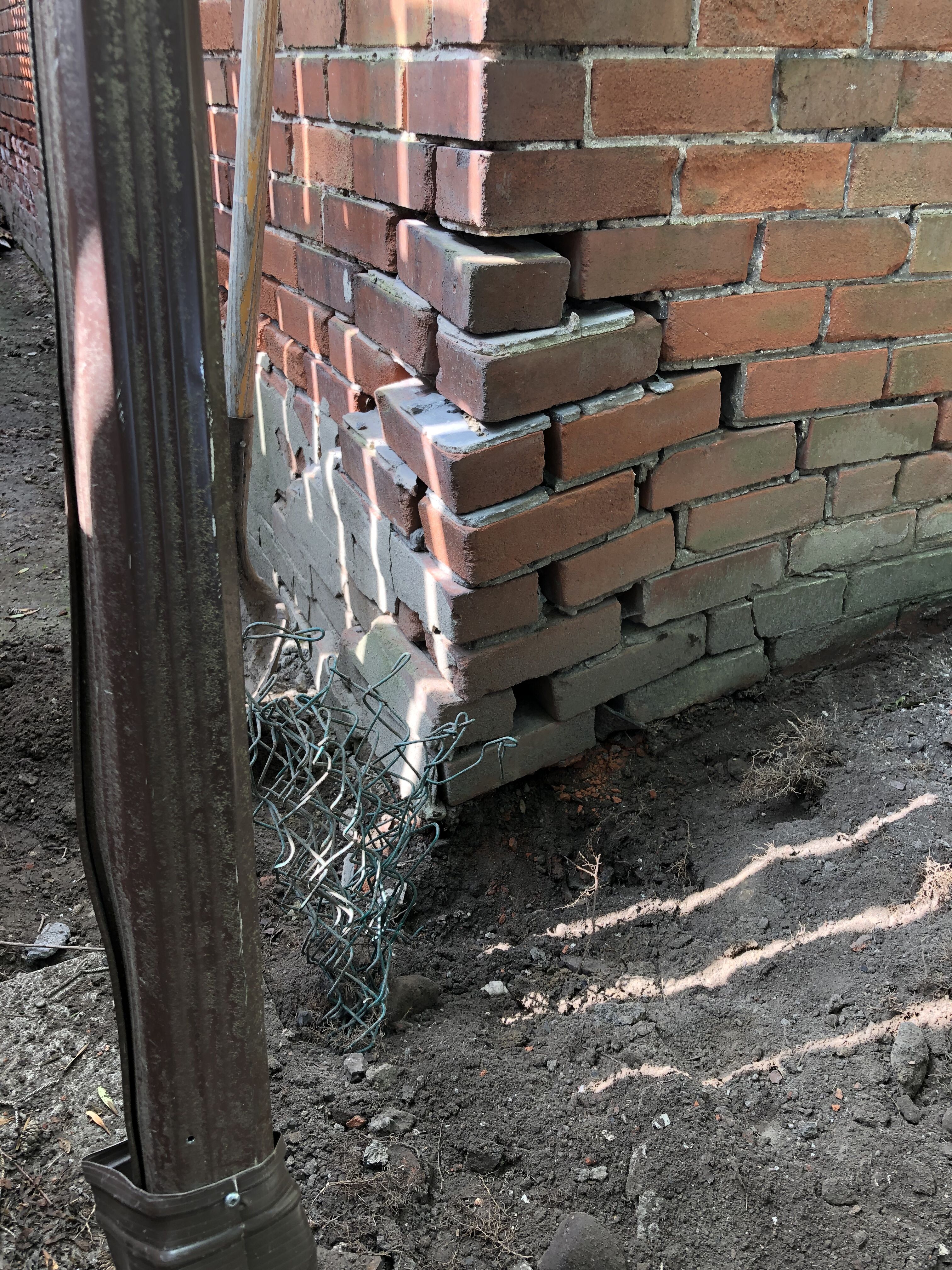
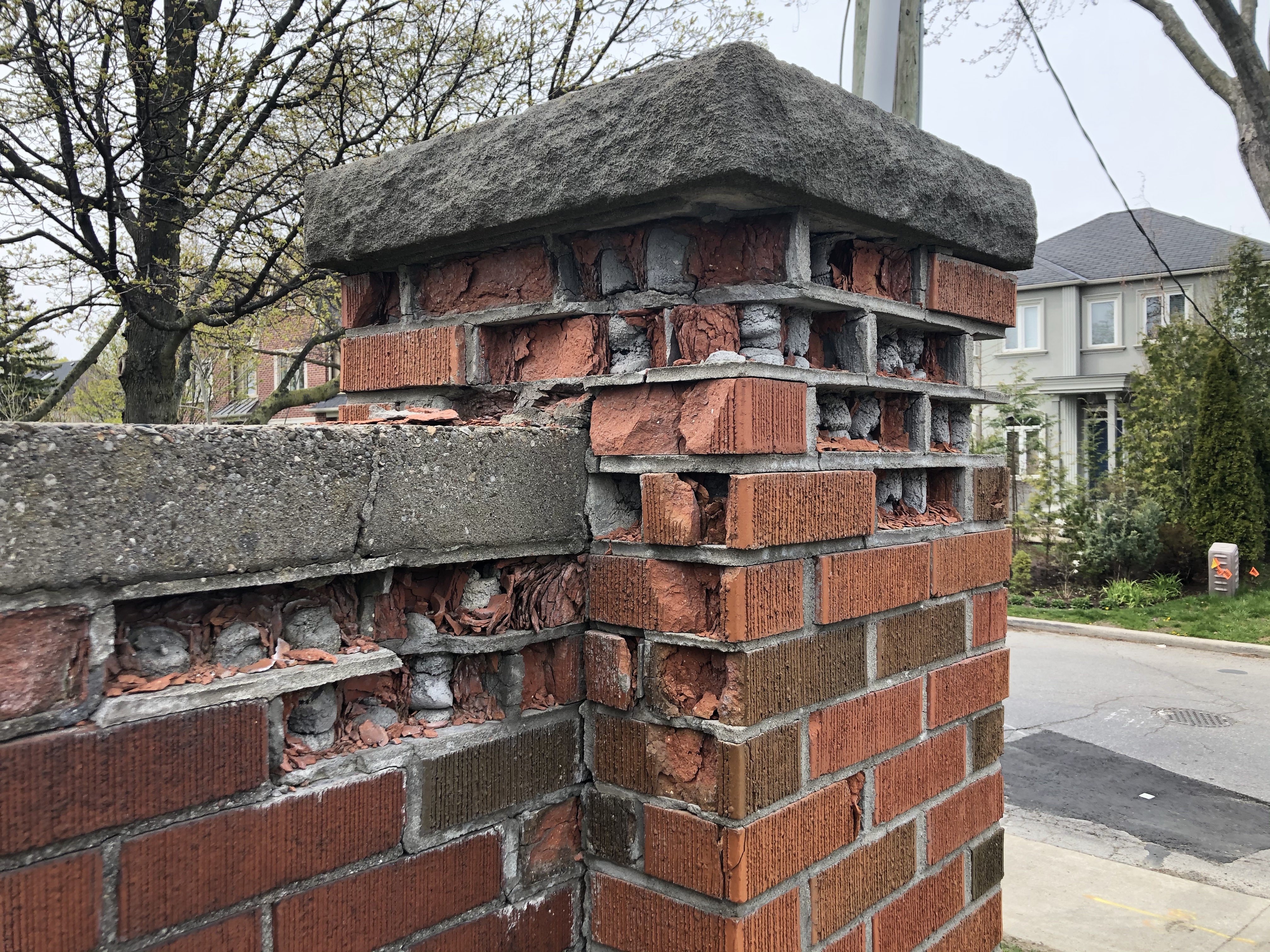
Salt Damage & Faulty Gutters and Downspouts
Adding to the concern, widely employed road salts in winter contribute to the exacerbation of deterioration. These salts, containing chlorides, infiltrate the brick and mortar. As water evaporates, it leaves behind salt residue, triggering salt crystallization within the masonry pores. The proliferation of these salt crystals intensifies the pressure on the brick, hastening the deterioration process until the pores crack and spalling becomes apparent. Moreover, defective gutters and downspouts have the potential to introduce substantial moisture onto brick walls, making them susceptible to salt crystallization and the adverse effects of freeze-thaw cycles.
Sandblasting Brick
The final accelerating factor is the plight of sandblasting that took place in Toronto in the second half of the 20th century. Some Victorian facades that were painted, then had the paint removed through aggressive sandblasting. This process removed the smooth fire skin of the brick, leaving a rough face that was highly prone to deterioration. A lot of the facades that we work on and see around the city are in a state of disrepair due to sandblasting that took place decades ago.
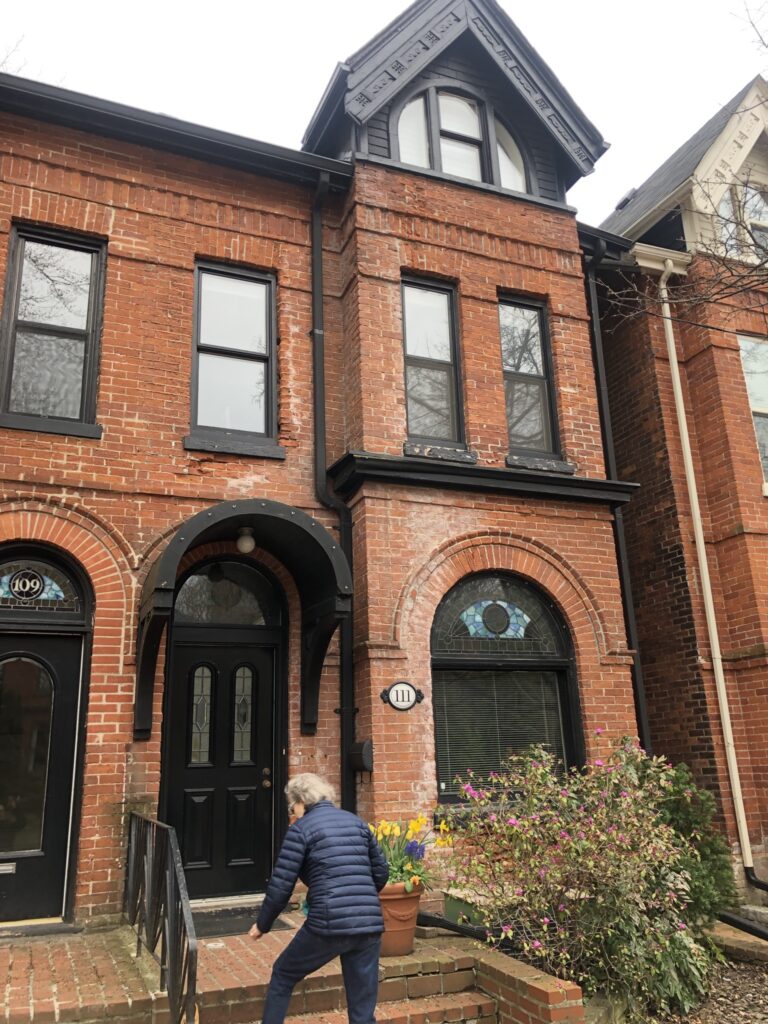
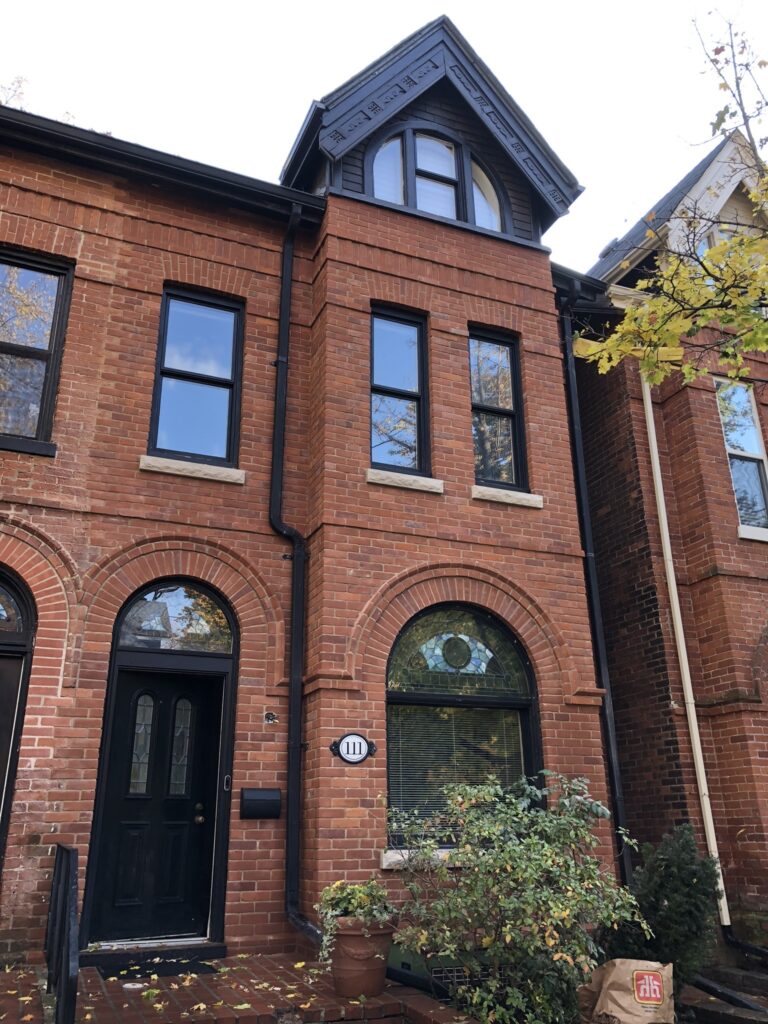
Restoring Victorian Brick Facades: Which Approach is Best?
Victorian brick facades in Toronto are at the very least 125 years old. Given their age, they have all seen multiple owners. The brickwork on a a lot of them is still in great condition. Others however, have been subject to decades of deterioration due to lack of maintenance and previous poor decisions over the previous century.
Rebuild vs Brick Replacement & Repointing
Cost is always a factor in construction. Having worked for millionaires, billionaires and everything in between I’ve yet to have a client ask “Can we make this more expensive?” If a client wants their facade to be aesthetically pleasing and structurally sound, the costs of the various approaches to achieve that result are weighed up. On a facade where brick replacement and repointing can achieve a good result we will opt to go with that approach. If too many brick need replacing or the cost of replacing brick and other remedial work is comparable to rebuilding, I will recommend dismantling and rebuilding the facade. Removing and replacing brick on a Victorian facade can hold a semblance to a game of Jenga. If too many brick are removed whole sections become unstable. There is a line where a full rebuild is the more practical solution.
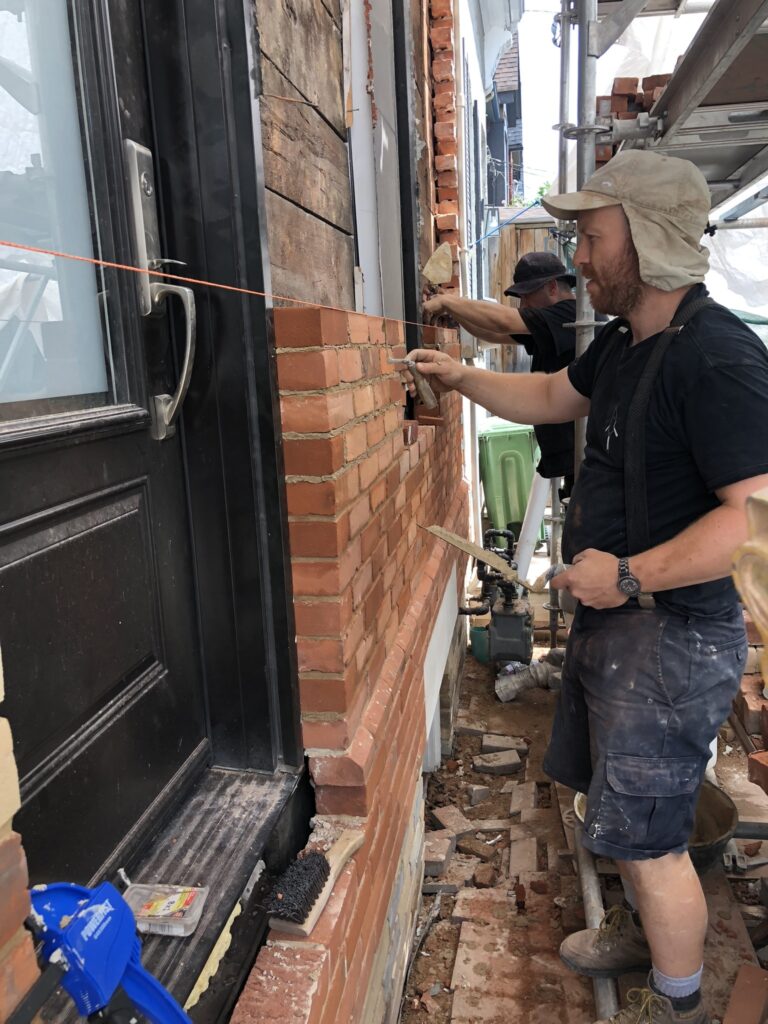
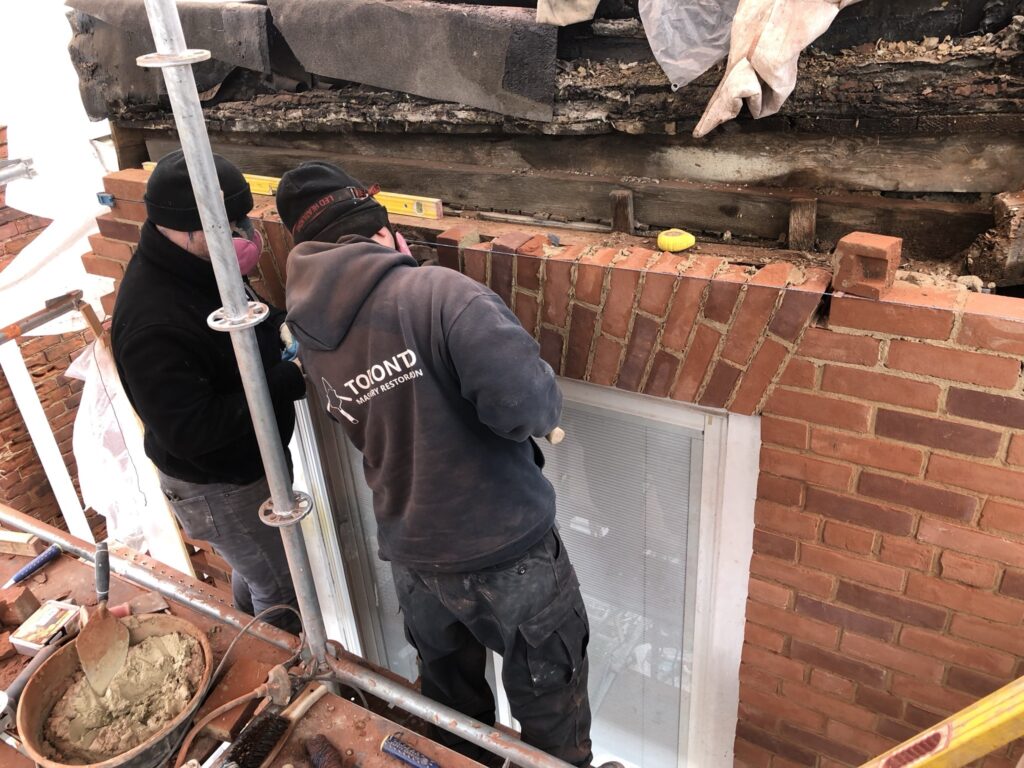
Paint Stripping Vs REbuild
A lot of Victorian Facades in Toronto are painted. The majority of neighbourhoods containing Victorian homes are gentrifying. Historically, It wasn’t always the case where their owners had money for repairs. A lot of these neighborhoods would have been working class. Paint would have been seen as a cheap method of covering up problems. No one has ever looked at a Victorian Facade and thought “That wall looks in great shape! Let’s paint it pepto-bismol pink!”.
Stripping paint from a Victorian brick facade is a gamble. Often times it reveals a wall that warrants a full dismantle and rebuild anyway. However now the client has incurred the cost of paint stripping on top of the cost of dismantling and rebuilding. Thick layers of paint can be deceptive. Paint can hide cement parging, cement pointing, shoddy past repairs and deteriorating brick. When we look at a painted facade we rely on our experience to determine if stripping the paint, replacing brick and repointing the mortar joints is the most economical approach.
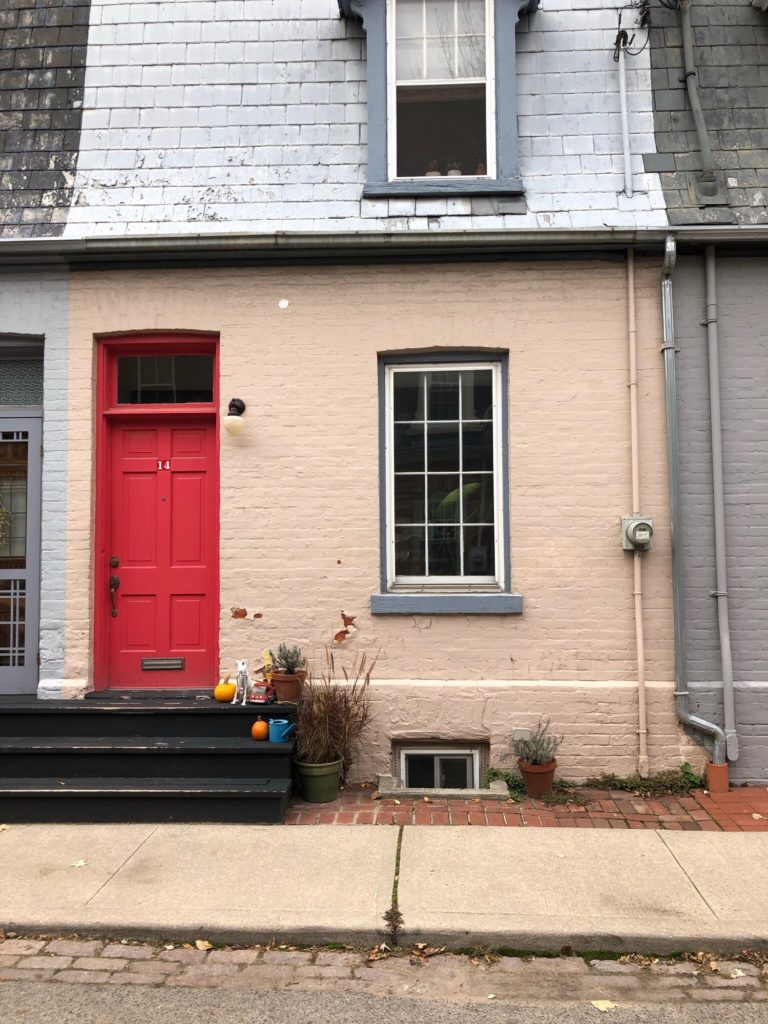
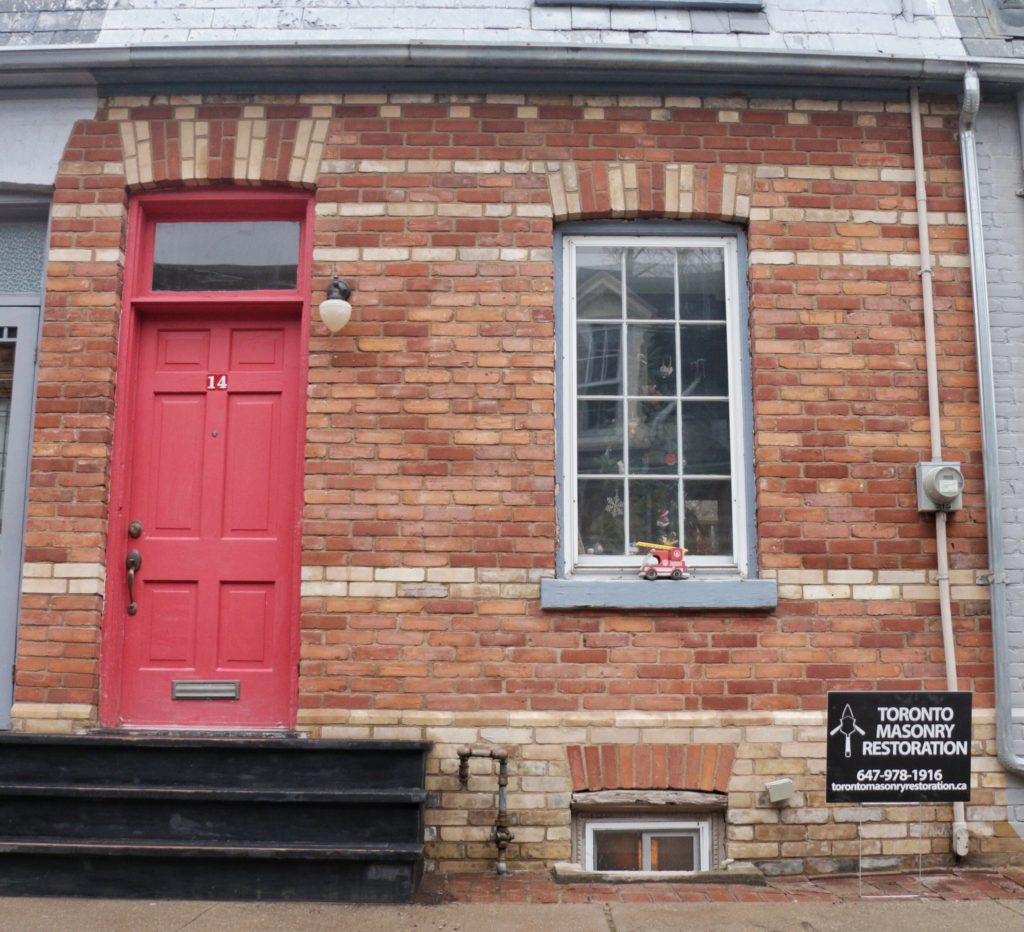
Dismantling & Rebuilding Victorian Brick Facades: Our Process
Documenting the Original Details
The first step in rebuilding a brick facade is documenting the details and features present in the wall. This is made easier with the convenience of smartphones. Everything is documented before the facade is dismantled. Failure to do this can make for some frustrating situations. It can be like trying to build a jigsaw puzzle without looking at the cover of the box for reference. Details which are important to note include arch details, polychromatic brick details and general measurements.
Scaffolding Erection
We use ring lock system scaffolding for all our work. It’s a versatile system that allows us to set up in awkward areas and access the the facade safely and comfortably. When the scaffolding is erected on the facade we take steps to ensure the neighbours and public are safe from potential hazards. Green mesh can be set up on the scaffolding, enclosing the work area, ensuring no debris results in a potential hazard.
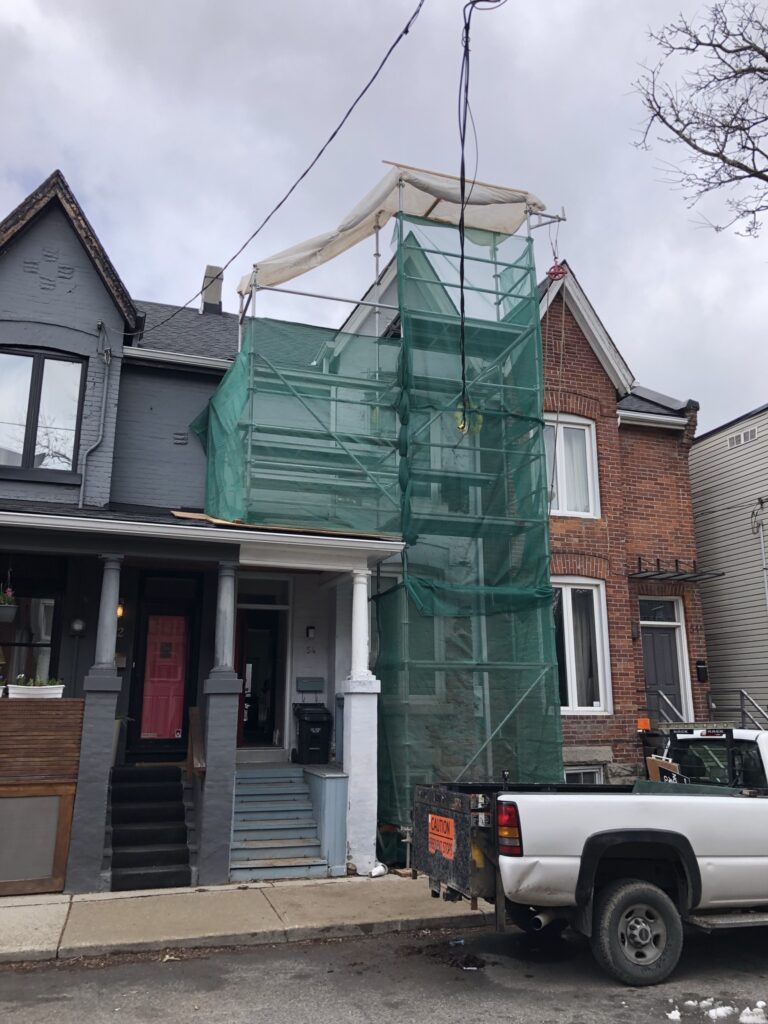
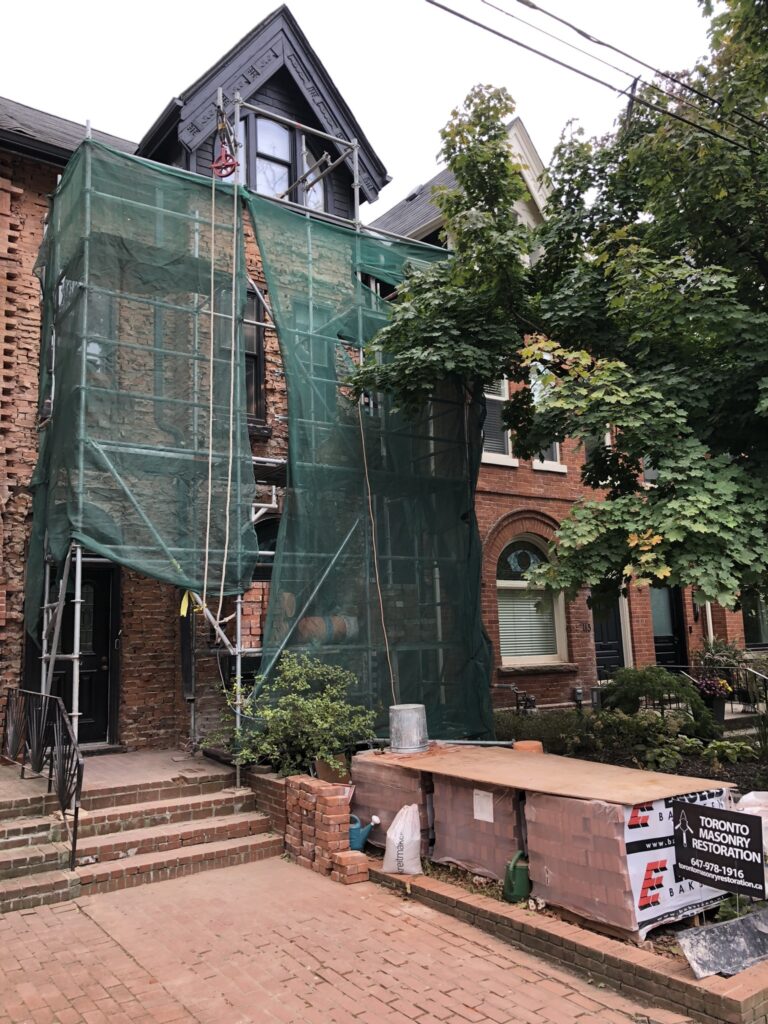
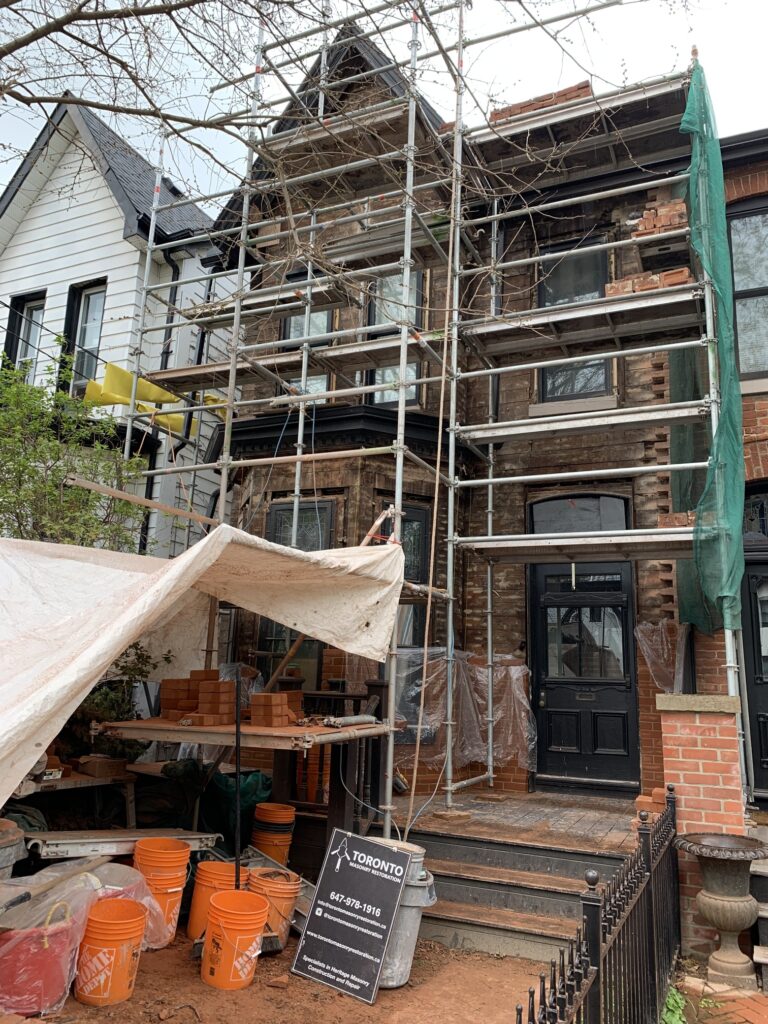
Brick Facade Dismantle
When dismantling a brick facade we always start at the top. Using a combination of hand tools and specialised power tools we begin removing brick. We typically only remove the outer wythe of brick. Any brick that is deemed reusable, we clean and set aside for the rebuild. We typically use the flip side of the brick that was not exposed in the wall. Generally speaking we are able to salvage 25-60% of the original brick. If the facade is connected to the neighbours, we use a special saw to tooth out a zig zag line down the property line. This allows us to rebuild properly and tie the brickwork back in as it was originally.
The deteriorated brick and old mortar is either thrown into a disposal bin or taken to a disposal facility in a truck. Tight working conditions may not facilitate the use of a disposal bin.
Brick Facade REbuild
Before bricklaying begins, we need to choose a brick that matches the original. We rely on our experience and familiarity with the brick available in the market for this. There are a variety of brick made in Europe that are excellent. The mortar we use for these restoration projects is lime mortar, similar to what was originally used. Our standard mortar colour is buff in colour. This matches perfect with the old mortar and giving an authentic look. Our meticulous method of tooling off the mortar joints with a slightly recessed finish gives a heritage aesthetic.
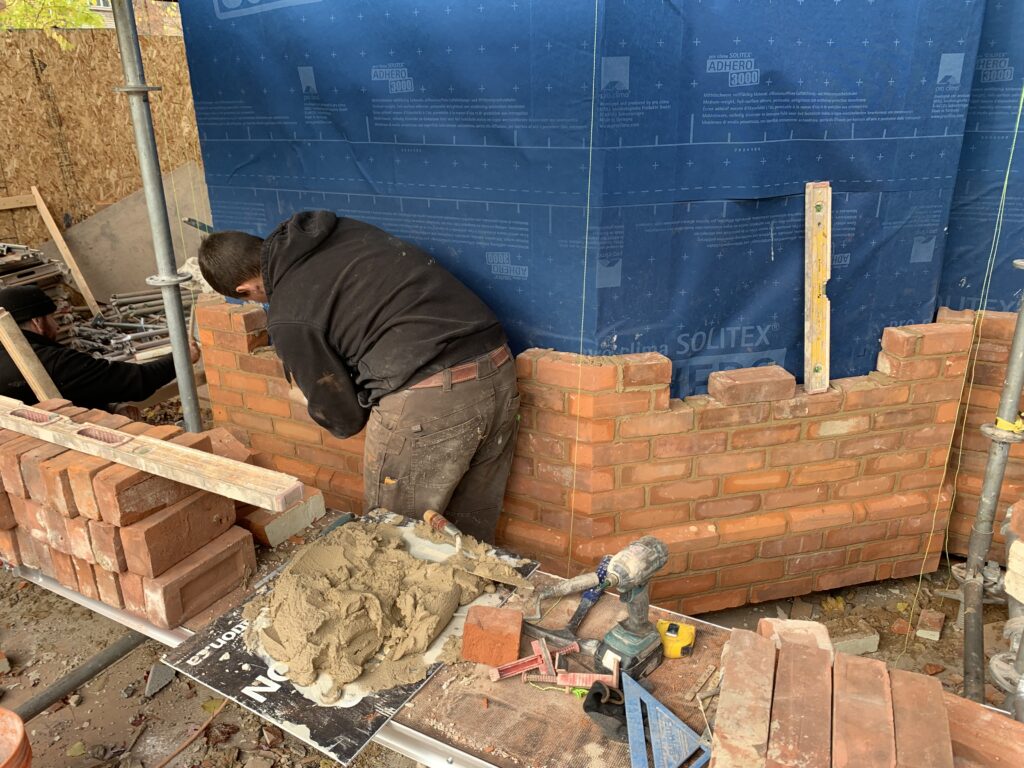
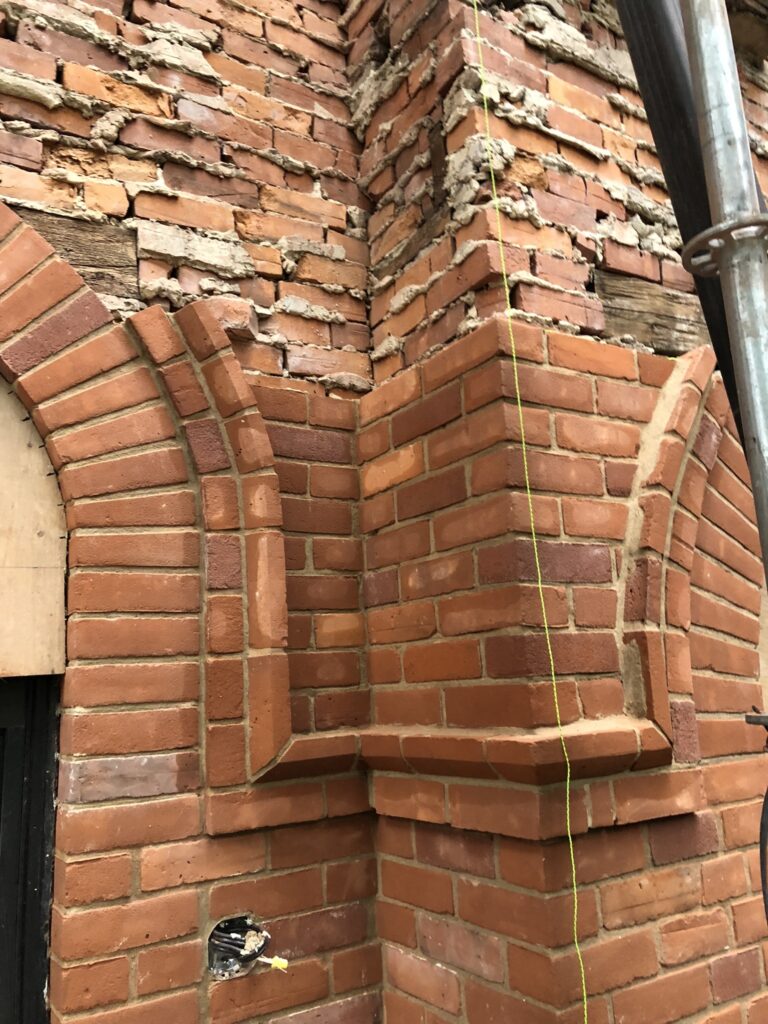
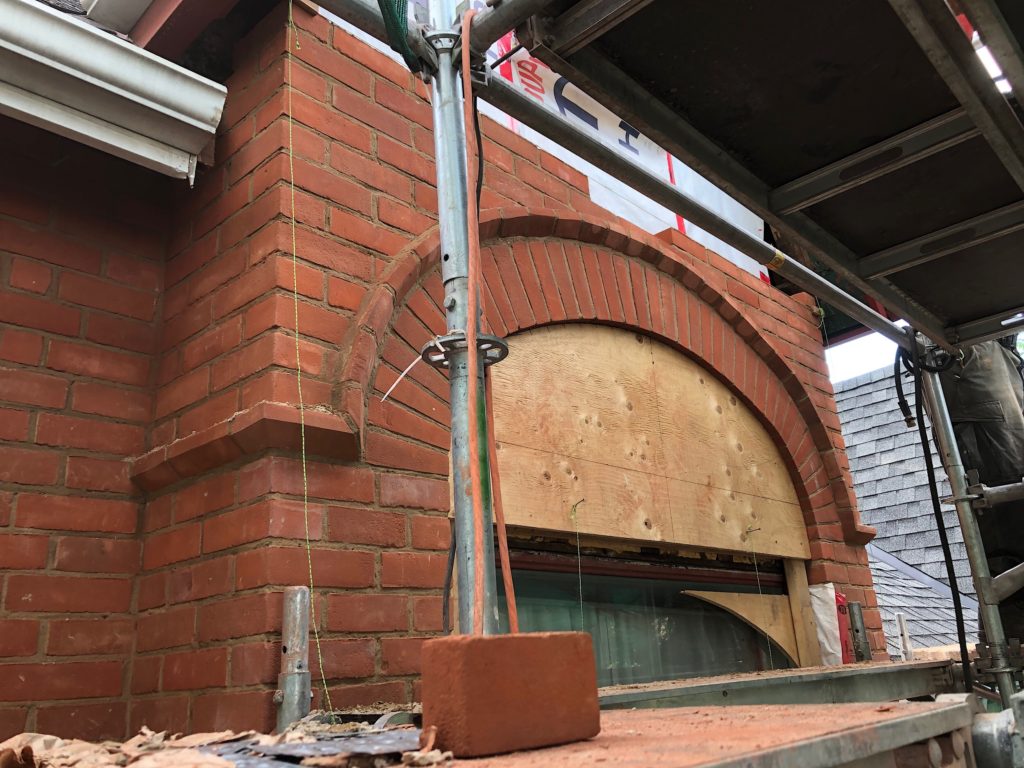
We custom cut all of our squint and plinth brick to be used in the facade rebuild. A squint brick is a 45 degree angles brick. You find them on bays on Victorian facades. A plinth brick is a brick that has a 45 degree slope on the top of the brick. You typically see plinth bricks at the bottom of victorian walls just above the foundation.
One thing that sets Toronto Masonry Restoration apart is our ability to recreate difficult details. Rebuilding brick arches is something we have honed over the years. These details take time to do properly and failure to take that time and rush through them results in a sloppy job.
Most Victorian Facades in Toronto have between 1500 and 2500 brick. To set up scaffolding, dismantle and rebuild takes on average 3 weeks. If this is a service you are interested in learning more about – Please reach out.